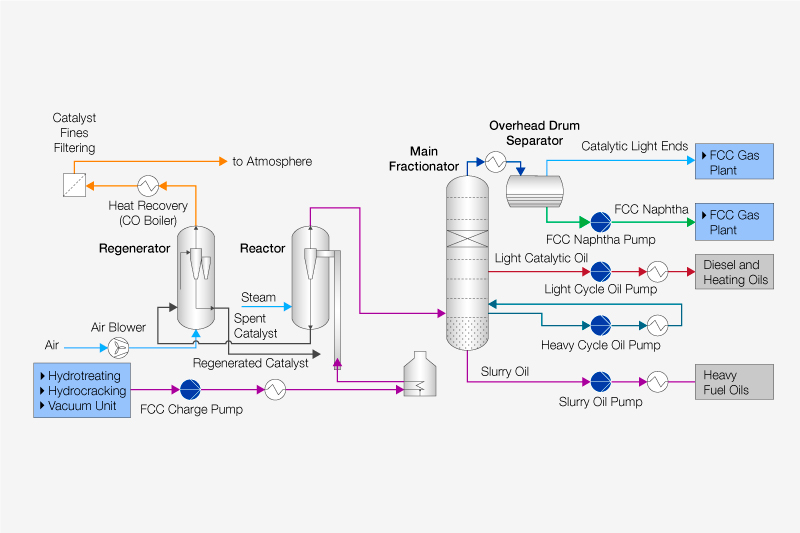-
API 610 and ISO 13709 pumpsAPI 610 / ISO 13709 international standard specifies requirements for overhung, between-bearings and vertically-suspended centrifugal pumps used in petroleum, petrochemical and gas industry process services.
Fluid catalytic cracker (FCC)
Efficient and reliable products deliver high performance results
The fluid catalytic cracking process (FCC) is one of the most important units for a refiner focused on gasoline production.
Refineries can cash in on the benefits of opportunity crudes and maximize profitability by upgrading bottoms product to produce more higher octane gasoline compared to basic thermal cracking. The fluid catalytic cracking process is generally considered to be more efficient, with less heat required and predictable results.
Fluid catalytic cracking process
The fluid catalytic cracking process (FCC) for conversion of straight run atmospheric gas oil, vacuum gas oils, atmospheric residues, and heavy stocks recovered from other operations into high octane gasoline, light fuel oils and olefin-rich light gases. The FCC process is best visualized as cyclic process, the key components of the FCC unit are the reactor, the regenerator and the fractionator.
Reactor
Feed is heated and mixed with the catalyst; reaction starts even before the fluid reaches the reactor; therefore, the residence time in the reactor vessel is very short. The prime role of the reactor is to function as a catalyst separator removing spent (coked) catalyst and direct it to the regenerator with cracked products moving on to the fractionator.
Regenerator
Rather than introduce expensive fresh catalyst to the process, the existing coke covered spent catalyst coming from the reactor can be regenerated by removing the coke deposits using high temperature air at around 600 - 700 C.
Fractionator
The fractionating column separates the light ends, gasoline, and fuel oils. The remaining bottoms product is termed cycle oil and is typically fed back to the beginning of the process where it is mixed with the fresh feed.




